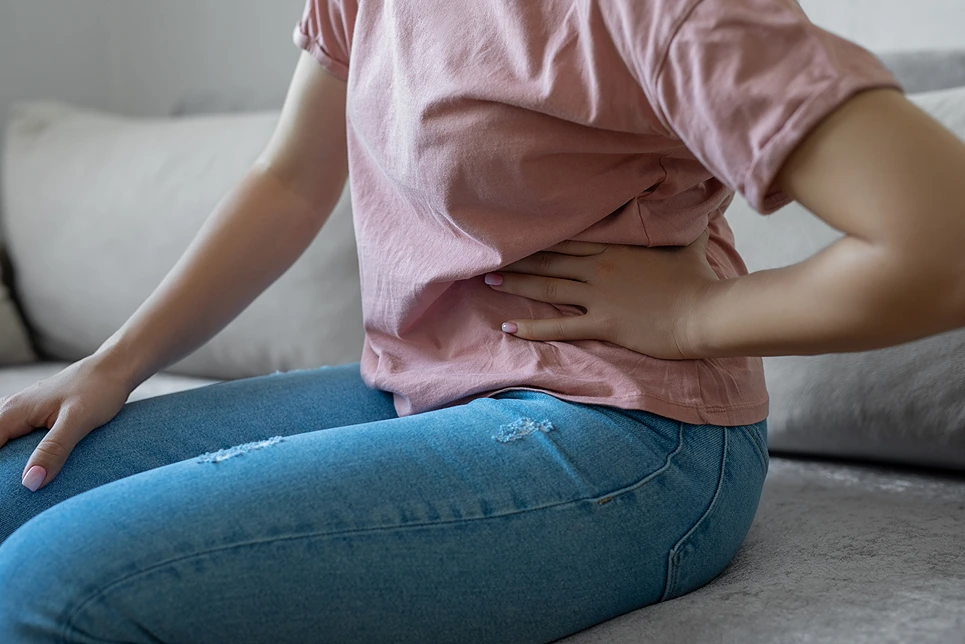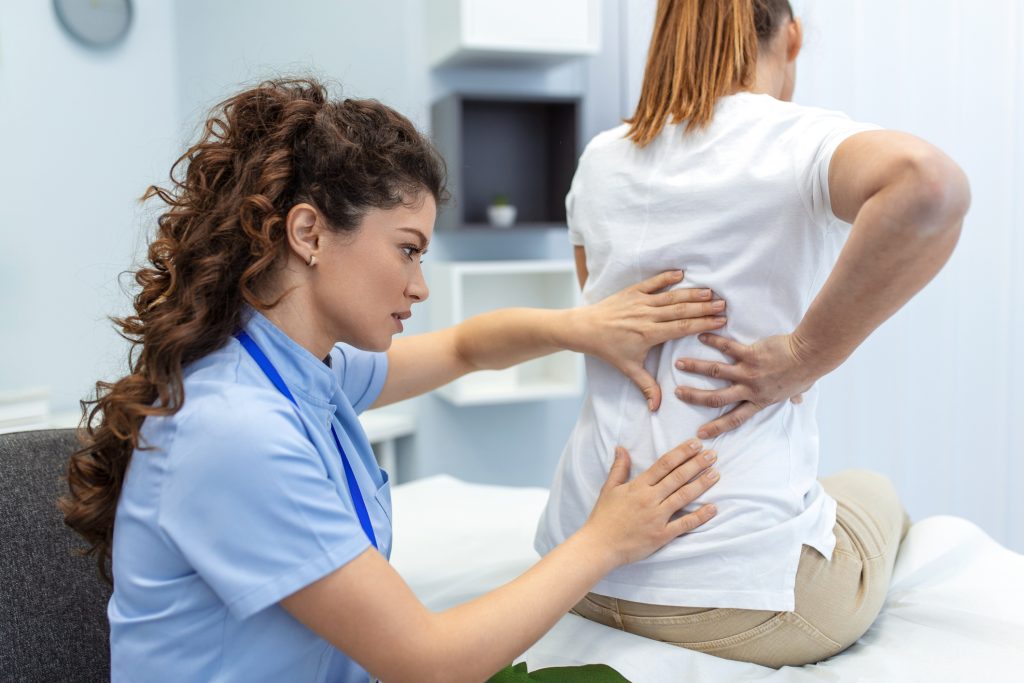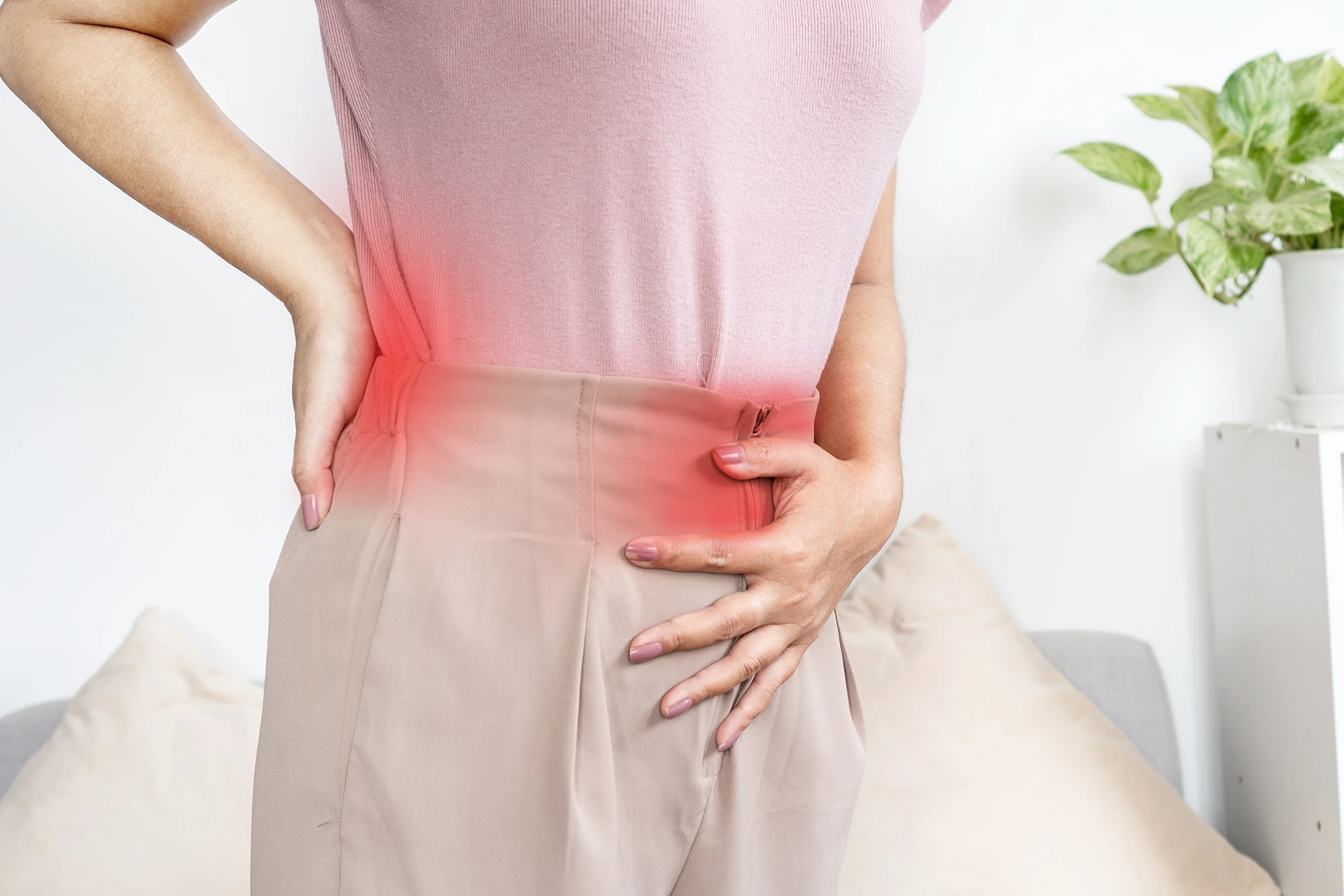Those who are experiencing stomach and back pain at the same time know just how unpleasant and disruptive this tandem affliction can be. This double whammy can make simple activities like sitting, standing, and walking a challenge.
When abdominal and spinal discomfort team up, it often signifies an underlying issue that needs attention. Learning the common causes and most effective treatments can help you identify the source and get back to feeling your old self again.
How Are Stomach and Back Pain Connected?
While the stomach and back may seem like distant parts of the anatomy, they are closely interrelated. The intricate web of nerves, fascia, and muscles connecting your gut and spine means inflammation or dysfunction in one area can directly impact the other.
Several key mechanisms explain how pain can translate from abdomen to back:
- Shared neurological wiring – Nerves originating in the stomach area connect into the spinal cord, which relays sensations of pain.
- Muscle contractions – Spasms in abdominal muscles from digestive issues can strain the fascia connecting the front and back.
- Inflammatory spread – Inflammation from organs like the pancreas, kidneys or intestines can fan outwards into nearby back tissues.
- Poor posture – Slouching puts extra strain on both the spine and abdomen.
When you experience concurrent stomach and back pain, understanding whether the origin is abdominal or spinal is crucial for proper diagnosis and treatment. Skilled practitioners conduct thorough assessments to pinpoint the source.
What’s Causing Your Stomach and Back Pain?
Many conditions can simultaneously or separately affect the stomach region and back. Common culprits include:
Digestive Dilemmas
Abdominal issues like gastritis, peptic ulcers, irritable bowel syndrome (IBS), hernias and bowel obstructions frequently cause referred pain into the back. Heartburn, cramps, bloating and gas also generate a one-two punch of tummy and spine discomfort.
Kidney and Urinary Concerns
Infections like kidney stones, bladder infections or pyelonephritis (kidney infection) inflame tissues near the stomach and spine, radiating pain upwards. Enlarged prostate can also trigger simultaneous abdominal and back pain.
Gynecological Problems
Ovarian cysts, fibroids, endometriosis and pelvic inflammatory disease often create abdominal pain that wraps around to the lower back.
Musculoskeletal Conditions
Chronic conditions like arthritis, spinal stenosis, herniated discs, scoliosis and muscle strains are common sources of back pain also creating abdominal symptoms. Pregnancy and heavy lifting leads to extra back strain as well.
Other Culprits
Medical emergencies like pancreatitis, abdominal aortic aneurysms, appendicitis or gallstones can generate sudden, severe pain in the upper abdomen and back. Diabetes and cancers also frequently cause symptoms in these areas.
What Other Symptoms Accompany Stomach and Back Pain?

Noting additional symptoms occurring with your abdominal and back pain provides crucial clues for your doctor. Be alert for these common accompaniments:
- Abdominal bloating, cramps or swelling
- Nausea or vomiting
- Diarrhea or constipation
- Gas, indigestion, acid reflux
- Fatigue, dizziness or weakness
- Fever, chills, night sweats
- Appetite changes and weight loss
- Burning urination
- Menstrual irregularities
- Pain with movement or certain positions
- Difficulty passing stool
Tracking your symptoms’ timing, triggers, duration and severity helps determine appropriate treatment. Keep notes to share with your physician.
When to See a Doctor for Stomach and Back Pain
Mild or temporary abdominal and back pain often resolves with rest, hydration and over-the-counter analgesics. But certain circumstances require prompt medical evaluation, including:
- Unexplained weight loss
- Persistent or worsening pain
- Fever over 101°F (38°C)
- Vomiting or bloody stool
- Recent injury to abdomen or back
- Known condition like diverticulitis or Crohn’s disease
- Pain interfering with work, sleep or daily activities
- Difficulty urinating or pelvic pain
- Sudden, severe pain
Seek emergency treatment for symptoms like crushing chest pain, inability to pass stool or urine, or severe head injury related to a fall from back pain. Don’t tough it out alone – a physician can determine if your situation is life-threatening.
How Doctors Diagnose the Cause of Stomach and Back Pain
Pinpointing the root issue causing stomach and back discomfort usually involves these diagnostic methods:
| Diagnostic Method | Description |
| Medical History and Physical Exam | Your physician will ask detailed questions about symptoms, risk factors, family history and lifestyle. They’ll listen to your abdomen, assess spine flexibility and check for areas of tenderness. |
| Description of Symptoms | Be prepared to explain important details like the pain’s location, timing, triggers, quality, severity and duration. |
| Blood and Urine Tests | These check for signs of infections, kidney problems, pancreatitis and other issues. |
| Imaging Tests | X-rays, CT scans, MRIs and abdominal ultrasounds help identify kidney stones, tumors, intestinal blockages and other abnormalities. |
| Endoscopy | A tiny camera threaded down the throat into the stomach and small intestine can reveal ulcers, cancers, bleeding and more. |
| Food Intolerance Testing | For digestive problems, eliminating trigger foods through elimination diets or sensitivity tests brings relief. |
Getting a correct stomach and back pain diagnosis requires active partnership with your medical team. Make sure to speak up about all of your symptoms and concerns.
Common Treatments for Relieving Stomach and Back Pain
Treatment targets the specific illness, injury or dysfunction creating your concurrent abdominal and back woes. Typical options include:
Medications: Antibiotics for infections, antacids and acid reducers for digestive issues, pain relievers, muscle relaxants and steroids to reduce inflammation.
Dietary Changes: Avoiding foods that worsen symptoms allows gut tissues to heal. Fiber, probiotics and hydration also improve many gastrointestinal causes.
Surgery: Hernia repair, cyst or fibroid removal, bowel obstruction or ulcer treatment, joint repair or replacements, spinal decompression.
Physical Therapy: Stretches, exercises and manual techniques ease back strains, alignment issues, muscle spasms.
Seeking conventional medical care and physical rehabilitation offers the best chance for overcoming persistent stomach and back discomfort.
Dietary Approaches for Abdominal and Back Pain Relief
Many physicians usually recommend dietary tweaks as frontline treatment for abdominal and back discomfort caused by issues like gas, constipation, acid reflux, ulcers, IBS, and muscle strain.
Before diving into new medications or invasive procedures, modifying your diet presents a logical first step when dealing with stomach and back pain. The foods you eat directly impact digestive health and inflammation levels throughout your torso.
Dietary adjustments are extremely beneficial because they are low risk, gentle on the body, and put you in control of naturally soothing pain and healing tissues.
Avoid Food Triggers
Keep a food journal to identify problem foods worsening your symptoms. Common culprits are fatty, fried or spicy foods, alcohol, caffeine, carbonated beverages, dairy, gluten and excess fiber. Eliminate triggers for several weeks to see improvement.
Follow a Low-FODMAP Diet
Limiting short-chain carbohydrates that ferment in the gut lessens gas, bloating, cramping and pain. Reduce intake of onions, garlic, beans, dairy, wheat and sugar alcohols.
Increase Fluid Intake
Dehydration exacerbates many sources of pain. Aim for 8-10 glasses of water daily. Fluids like broth, herbal tea and juices also count towards your total.
Eat More Fiber
Soluble fiber from oatmeal, nuts, seeds, lentils, berries and prunes softens stool, eases constipation and promotes gut health. Ramp up slowly to 25-35 grams daily.
Try Probiotic Foods
Yogurt, kefir, kombucha, sauerkraut, kimchi and pickles contain beneficial bacteria to improve digestion and reduce inflammation.
Limit Problem Foods
Decreasing greasy, sugary and processed items that irritate the gut aids healing of issues like ulcers, IBS and gastritis.
Eat Foods Rich in Omega-3s
Fatty fish, walnuts, flaxseed, chia seeds and soybeans contain anti-inflammatory omega-3 fatty acids to soothe abdominal and back tissues.
Eat Small, Frequent Meals
Grazing on 5-6 small meals spaced evenly throughout your day puts less pressure on your stomach and back than 1-2 large meals. It also keeps nutrients steadily flowing.
Practice Mindful Eating
Slow, relaxed eating while minimizing distractions enables you to tune into the body’s signals of fullness and discomfort. This prevents overeating and worsening of symptoms.
To Wrap It Up

If you’re still putting up with constant stomach and back pain, it may be time to take the next step. Don’t just mask the symptoms with painkillers – get to the bottom of what’s causing the problem in the first place.
The good news is that with today’s medical knowledge and technology, virtually any type of abdominal or back discomfort can be correctly diagnosed and treated. The challenge is finding the physician best equipped to evaluate YOUR unique situation.
That’s where a service like Kaly comes in handy. Kaly simplifies the process of identifying doctors with specialized expertise related to your symptoms. Just answer a few questions about your specific pain patterns, health history and needs. Kaly’s intelligent matching platform immediately connects you to providers with the ideal experience to get you answers and relief.
So stop settling for a life plagued by nagging stomach and back problems! Visit Kaly to quickly get matched with a doctor ready to help you feel better at last.
